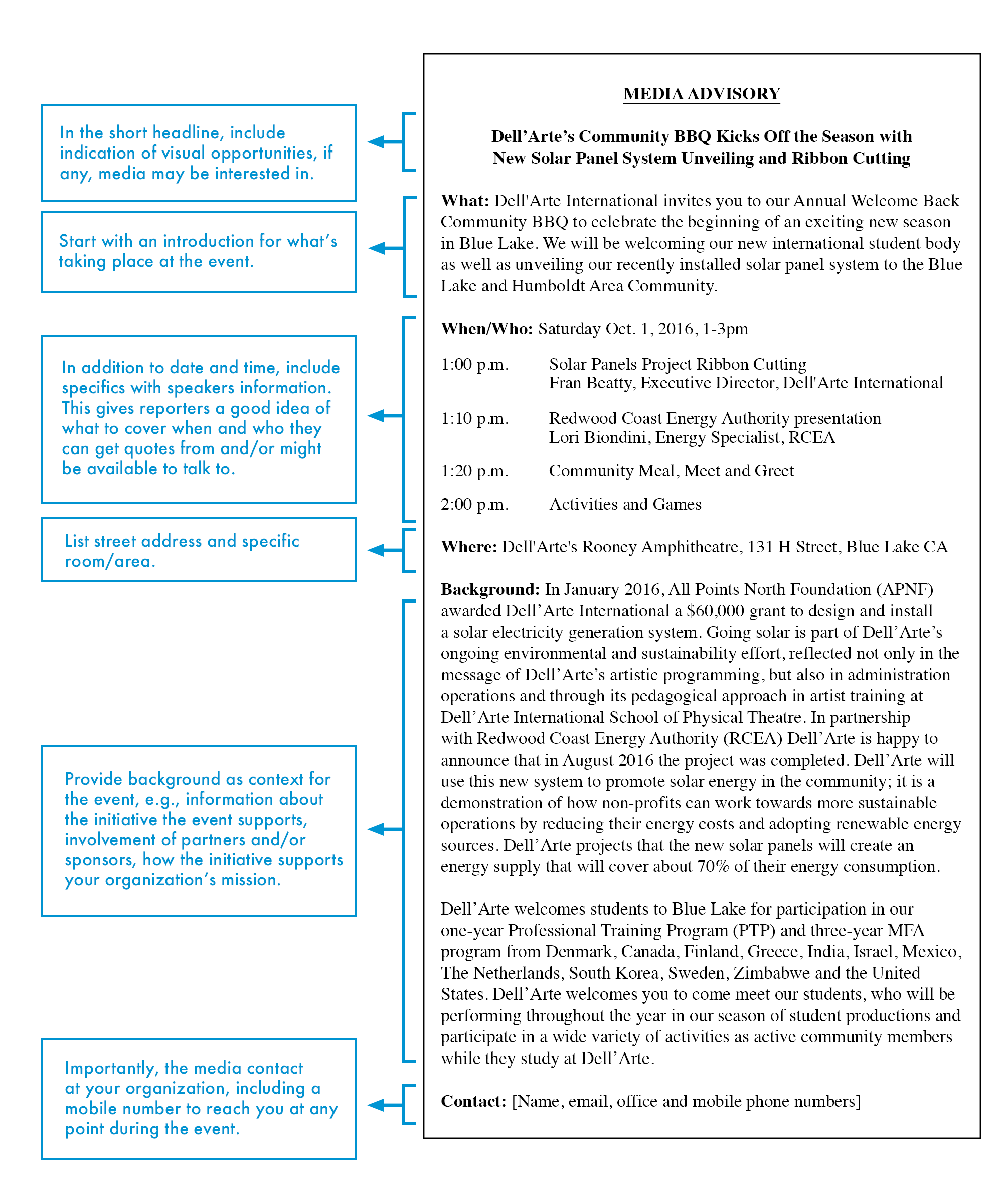Media Outreach
Given the remarkable work your organization does, you have the opportunity to increase your reach and visibility through media coverage. Landing placements in “traditional media” (e.g., television, radio, newspapers and their websites) helps establish and/or reinforce your organization as a trusted, credible resource. As a local/national “expert” on either an education or solar energy platform, you are an important resource whom they can look to when they cover your topic area.
These are four core steps to media outreach:
Develop Your Media Materials
Now that you have organized your pitch, you have a quick-reference roadmap to develop a handful of core materials that can help you in your media outreach. Because reporters have limited time and resources, it’s important to draft concise, creative and easily understandable materials that get – and keep – their attention, and that provide key information for their stories.
Below are descriptors and samples of core media materials, with tips to help you as you develop them.

Pitch Email
A brief email will likely be your point of entry to trigger your media contact’s interest. Using your media pitch points as a reference, pull key information – summarize the “what” and “why” components of your story and pick a compelling subject line to capture attention.
 News (or Press) Release
News (or Press) Release
A key piece written to give to the media, your news release lays out your story for reporters. The lead-in should be succinct and summarize the news appeal with the five W’s (who, what, when, where and why). Include quotes from your organization’s leadership and, if possible, other credible sources to highlight important points. These quotes also can serve as very brief, key messages that your spokesperson delivers verbally during a media interview.
News (or Press) Release
A key piece written to give to the media, your news release lays out your story for reporters. The lead-in should be succinct and summarize the news appeal with the five W’s (who, what, when, where and why). Include quotes from your organization’s leadership and, if possible, other credible sources to highlight important points. These quotes also can serve as very brief, key messages that your spokesperson delivers verbally during a media interview.
 Media Tracking Chart
Media Tracking Chart
It’s helpful to maintain a pitch status chart to keep your media outreach organized, and to have a record to keep your manager or others updated on your progress. Try to capture news clips (scans or links) to send to All Points North Foundation so that we can repost and link to your good news on our website.
Media Tracking Chart
It’s helpful to maintain a pitch status chart to keep your media outreach organized, and to have a record to keep your manager or others updated on your progress. Try to capture news clips (scans or links) to send to All Points North Foundation so that we can repost and link to your good news on our website.
Additionally, if you are holding an event, the following are very helpful to reporters:
Media Advisory
If you are holding an event, a media advisory (also called a media alert) is an efficient way to notify the press. It should be a brief, one-page rundown of key information reporters need to cover the event/your event.
Photo Cut Lines
Cut lines are essentially captions you offer to go with photos you provide to the media. A photo cutline focuses on the action shown in the shot, written as a brief one-line description of the story the photo tells (e.g., the who, what, when, where, why).
Click Here for All Points North Foundation’s Response to COVID-19
All Points North Foundation provides grants for U.S.-based projects and initiatives that support our priorities: improving public middle school education and teacher training, and implementing effective solar programs and/or projects.
Have a U.S.-based project you’d like to discuss?



